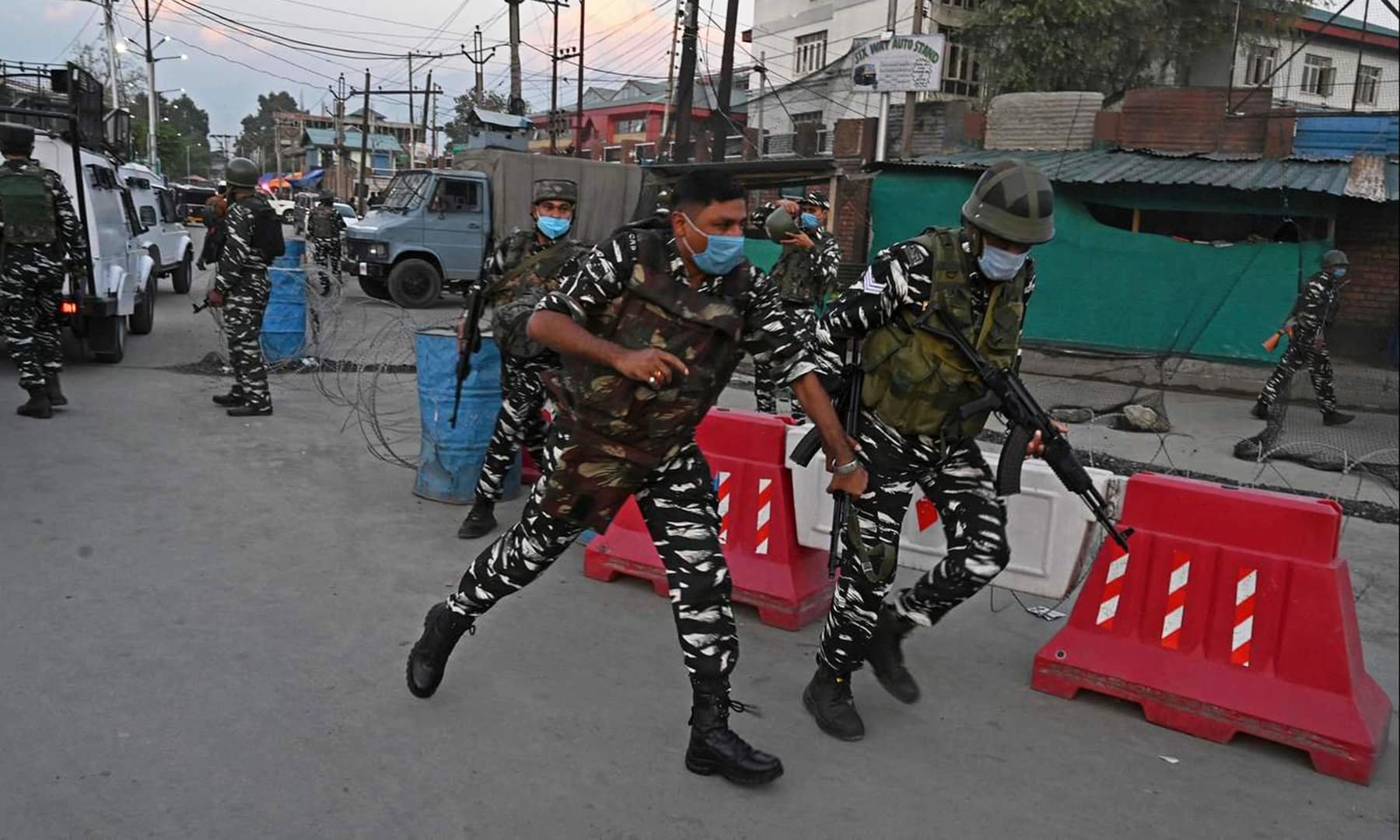Explainer: What is behind the recent surge in violence in Indian-occupied Kashmir?
A surge in violence in Indian-occupied Kashmir in recent weeks, including a spate of attacks on civilians and a widespread crackdown by security forces, has left 33 people dead in the heavily militarised region since early October.
Occupied Kashmir has been the site of a bloody armed insurrection against New Delhi since the 1990s.
What is happening?
The fresh wave of killings by local fighters appears to be targeted towards non-Kashmiris, including migrant workers, and members of the minority Hindu and Sikh communities in the Muslim-majority Kashmir valley.
On Sunday, fighters shot at three migrant workers in Kashmir's Kulgam district, killing two and wounding one, a day after two labourers from northern India were gunned down in two separate incidents.
Last week, two teachers — one Hindu, another Sikh — were shot dead inside a government school in occupied Kashmir's main city of Srinagar.
Fighters have killed a total of 11 civilians since Oct 6.
Who is behind the killings?
Indian security officials have said that some of the assassinations have been carried out by The Resistance Front (TRF), which they describe as a front for proscribed group Lashkar-e-Taiba (LeT), and Hizbul Mujahideen, a group traditionally made up of local fighters.
India says Pakistan supports the insurgency in Kashmir, a charge strongly denied by Islamabad. Pakistan says it only provides diplomatic and moral support for the Kashmiri people.
New Delhi has struggled for decades to dampen secessionist sentiments in the Muslim-majority region.
Reasserting New Delhi's control in August 2019, Prime Minister Narendra Modi abolished Article 370 of the Constitution, ending the region's autonomy and removing its statehood by splitting it into the federal territories of Jammu and Kashmir (J&K) and Buddhist-dominated Ladakh.
The TRF emerged in the wake of the Aug 2019 reorganisation of occupied Kashmir, which was accompanied by a harsh communication and movement lockdown in the Kashmir valley to forestall any large-scale protests.
In recent attacks, TRF members have mostly used easily concealable small arms like pistols to shoot at their targets.
In a statement on social media earlier this month, the group said it was not targeting people on the basis of their religion but only those working for Indian authorities. Reuters could not immediately verify the authenticity of the statement.

What has been the response
Indian security forces have launched a wide crackdown, killing 13 fighters in the last two weeks in multiple operations across the Kashmir valley.
Last week, after the two teachers were killed in Srinagar, authorities detained more than 300 people for questioning, most of whom were subsequently released.
Those detained included members of the banned religious organisation Jamaat-e-Islami, an umbrella alliance of secessionists known as the Hurriyat Conference, and others with previous links to militant groups.
Over the past week or so, the Indian military has also been battling insurgents in a forested area in the Jammu region, which abuts the Kashmir valley, and has lost nine soldiers — the most number of casualties in a single operation in recent years.
Why is the latest violence significant?
The assassinations have spread panic among some sections of the population, with scores of minority Hindus and migrant workers fleeing the Kashmir valley towards Jammu and other areas.
Political leaders in the region have condemned the killings but have also questioned the Modi government's policies after deciding to split the territory in 2019.
“None of these people deserved to die,” former state chief minister Mehbooba Mufti said in a tweet.
“One wonders what will it take for GOI (government of India) to realise that its policies have been a monumental failure in J&K and at what cost?” she said.
Meanwhile, Foreign Minister Shah Mahmood Qureshi strongly condemned the "unabated spate of extra-judicial killings of Kashmiris in [occupied Kashmir]".
"Indian state-terrorism and brutal military siege cannot break the will of the Kashmiri people fighting for the right to self-determination," he tweeted, saying Pakistan "resolutely supports" their cause.
Header image: In this photo taken on October 2, 2021, Indian security personnel arrive near the site where a man was shot dead by unknown gunmen in the Karanagar area of downtown Srinagar. — AFP/File





